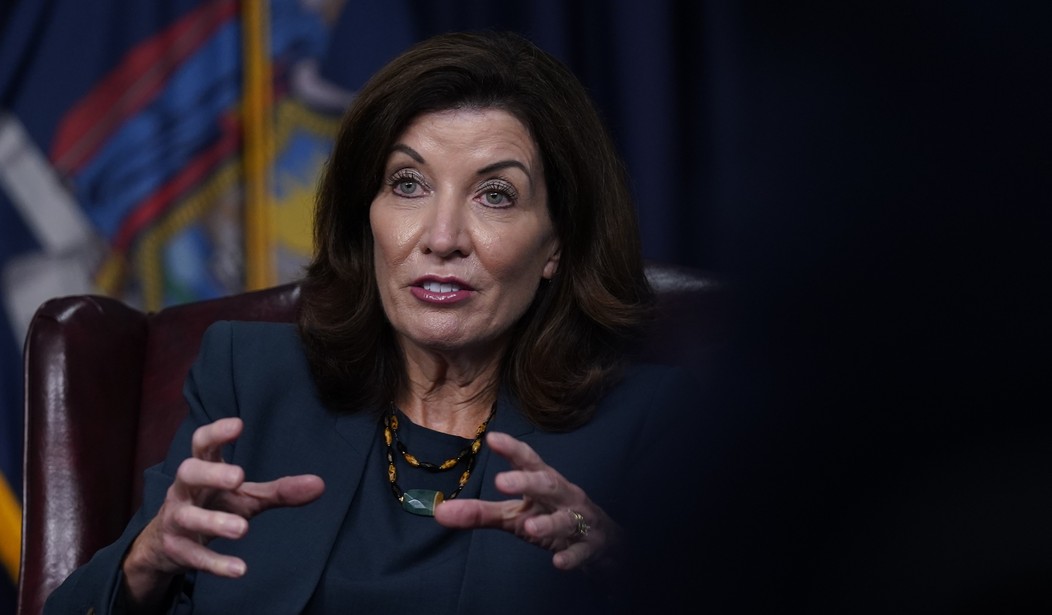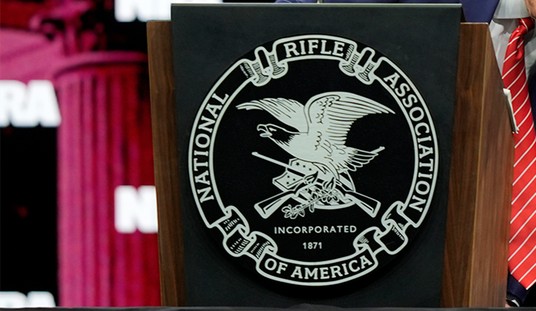Days after declaring that there would be a gun control response to the shooting at a Buffalo grocery store that left ten people dead, New York Gov. Kathy Hochul has issued an executive order making the state’s “red flag” firearms seizure law “shall issue” for New York State police; declaring that the department “shall insure” that officers are “trained and instructed” to file red flag petitions every time they believe there is probable cause that a person poses a danger to themselves or others.
The order, which takes effect immediately, applies only to the New York State police, but could still dramatically expand the use of the petitions, which allow for legally-owned firearms to be surrendered or confiscated by police once a judge finds that there’s “clear and convincing” evidence that someone presents a threat; either to themselves or someone else. These are not criminal proceedings, by the way. Someone doesn’t have to be charged with a crime in order to be subject to the law, and because these petitions are heard in civil court, the subject of a petition is not entitled to legal representation. If you can afford an attorney you can have one, but if you can’t, you’re on your own. And in the case of “temporary” Extreme Risk Protection Orders, the hearing can take place without the subject of the petition ever being aware that it’s taking place, much less given the opportunity to present evidence in support of their position.
In addition to the expansion of the state’s “red flag” law Hochul is also calling on Democrats in the state legislature to pass a number of other new restrictions on the right to keep and bear arms, including a “microstamping” law that could result in a de facto ban on new semi-automatic handguns.
On Wednesday, Ms. Hochul specifically called for legislation to require the so-called microstamping of semiautomatic pistols that would help law enforcement officers trace cartridge cases found in crime scenes to the gun that discharged them. Legislation requiring microstamping, which California passed in 2007 over opposition and lawsuits from gun manufacturers, has long been discussed in Albany, with bills introduced since at least 2009.
Ms. Hochul, as she had hinted over the weekend, is also seeking legislation to expand the state’s existing ban on some assault weapons to capture firearms that are currently not covered, known as “A.O.W.s,” or any other weapon.
There’s a good reason why California is the only state with a microstamping law on the books; it’s been an utter and complete failure, at least as far as reducing crime goes. Instead, it’s served as a slow-motion gun ban by severely curtailing the makes and models of semi-automatic handguns available for sale in the state. The same will be true if New York approves a microstamping measure, which, by the way, will have absolutely no impact on criminals, most of whom acquire their guns through illegal means to begin with. The microstamping technology is also easily defeated, as the NRA pointed out earlier this year when a similar bill was up for a vote in an Illinois legislative committee.
Microstamping is easily defeated, deliberately or inadvertently, by switching parts, by it becoming worn through normal use and cleaning of the firearm, or by deliberately defacing by grinding, abrading, etc.
Because criminals often use stolen firearms, microstamping might, at best, identify who was the last lawful owner of the firearm. Criminals could also collect cartridge casings from shooting ranges to drop at crime scenes in order to fool investigators, pick up their cartridge casings before leaving the crime scene, or use firearms, such as revolvers, that do not automatically eject them.
As for Hochul’s desire to include all items determined by the ATF to be “any other weapon” in the state’s ban on so-called assault weapons, perhaps she’s unaware of the fact that in order to legally own one, purchasers are already required to jump through several federal regulatory hurdles. Or, more likely, she simply doesn’t care.
There are two ways that you can legally own an AOW. The first and easiest way is to purchase one. The other way is to make one yourself by modifying the weapons you currently own. However, modifying a weapon is fraught with legal pitfalls; unless you are well-versed in firearms law, it’s probably best to purchase an AOW from a legal dealer.
To make a purchase, you need to find a dealer or manufacturer who can legally sell you one, then fill out all the necessary paperwork, which the dealer should be able to provide. You’ll need to fill out specific forms, and you may even need to go through fingerprinting with your local police station or sheriff’s office.
For certain NFT weapons (machine guns, short-barrel shotguns, etc), there is a $200 tax that needs to be paid before the weapon can be transferred. For AOWs, however, there is only a $5 transfer tax.
There are only about three weeks left in this year’s legislative session in Albany, but I wouldn’t be surprised if Hochul calls lawmakers back for a special session if they don’t pass these bills before the regular session expires, especially since none of Hochul’s announcements today dealt with new restrictions on concealed carry. The governor has already indicated she wants further restrictions placed on legal gun owners if the Supreme Court strikes down the state’s “may issue” carry permitting scheme, but that wasn’t a topic of today’s press conference, which means New York gun owners should be bracing themselves for another round of anti-Second Amendment legislation to be introduced in the days ahead.









Join the conversation as a VIP Member